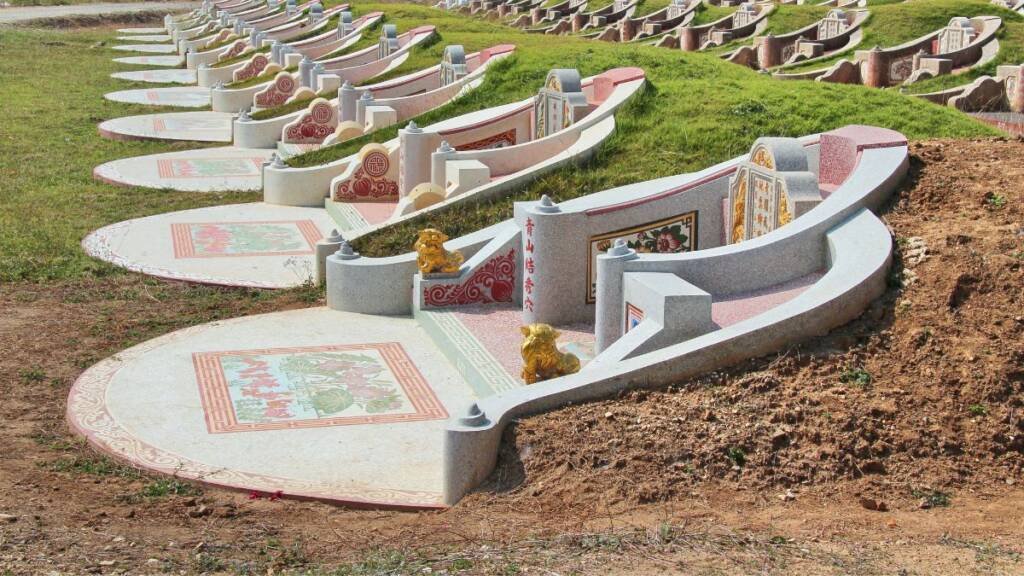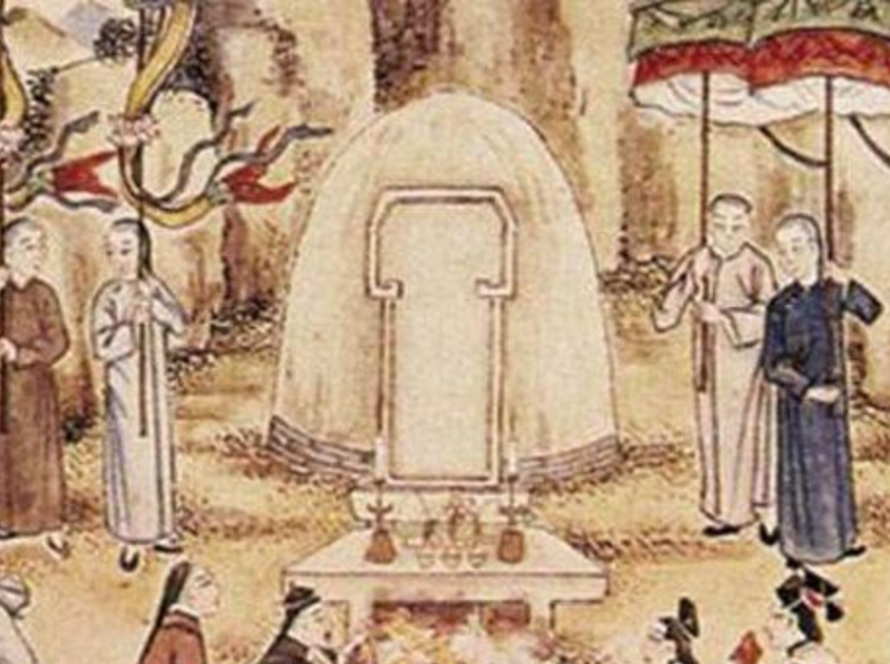The Culture and Tradition of Paying Final Respects in Chinese Customs
“养老送终” (caring for and sending off the elderly) has been a deeply rooted responsibility in Chinese culture since ancient times. The act of “送终” (sending off the elderly) is seen as a fundamental duty of the younger generation towards their elders. When an elder approaches the end of life, their children and grandchildren are expected to keep vigil by their bedside, day and night, as an expression of filial piety. Even if children are working far away, they must find a way to return home, whether by receiving a call, letter, or telegram, to ensure they can be present to send off their elderly relatives.
If the ailing elder is a woman (such as a mother or daughter-in-law), it is essential to notify her natal family in time to avoid misunderstandings or conflicts. If all the children and grandchildren are present when the elder takes their final breath, it is considered a blessing, a sign that the elder led a fortunate life. On the other hand, if any descendants are absent during this crucial moment, it may be viewed as a failure of filial duty, causing regret among the family and society.
The Ritual of Moving the Bed in Fujian: Ensuring a Dignified Departure
In some regions of Fujian, the “搬铺” (moving the bed) ritual is performed when a family member is critically ill. This practice involves moving the ailing person from a side room to the main hall, a place considered the most sacred in the house. Dying in the main hall is believed to be “dying in the proper place,” which ensures that the deceased’s soul can reunite with ancestors in the afterlife. If a person passes away in a side room, it may lead to the belief that their soul will linger and struggle to transition to the afterlife.
The process of moving the bed is a solemn and careful one, typically involving the eldest son holding the head, the second son holding the body, and the son-in-law holding the feet, with other relatives assisting. The direction of the move is critical, with the head facing forward and the feet backward. The entire ritual is performed with utmost care and respect, reflecting the family’s deep commitment to traditional customs.
The Initial Mourning Rituals: From Soul Calling to Sending Off the Soul
In ancient times, the initial mourning rituals included a soul-calling ceremony, known as “招魂” (zhao hun), where a shaman would perform rites to call back the soul of the deceased, believed to have temporarily left the body. Although this practice has faded over time, it still holds significance in some areas of Fujian. The ritual involves family members wailing loudly to express their grief and to call back the soul of the deceased.
Conversely, the practice of “送魂” (sending off the soul) is more widespread. As the person nears death, Buddhist monks or Taoist priests are often invited to recite scriptures, guiding the soul to the afterlife. Paper offerings, such as clothes, houses, and even paper servants, are burned, symbolizing provisions for the deceased’s journey to the afterlife.
The Tradition of Reporting a Death: Announcing the Passing to the Community
Reporting a death, or “报丧” (bao sang), is a crucial part of the mourning process, aimed at informing relatives and friends of the passing, inviting them to participate in the funeral rites. In Fujian, this announcement can take various forms. One common method involves firing cannons or setting off firecrackers to alert the community, followed by posting an obituary on the family’s front door. The wording and formality of these announcements vary by region, but they all serve the purpose of publicly acknowledging the death and inviting the community to mourn.
In modern times, particularly in urban areas, an official obituary may be issued by the deceased’s workplace, and announcements may also be published in newspapers or shared digitally. This tradition ensures that the deceased is honored and that their passing is recognized and mourned by all who knew them.
The Small Burial: Preparing the Deceased for the Final Rest
The “小殓” (xiao lian) or small burial is a ceremony in which the deceased is bathed and dressed in burial clothes. In many parts of Fujian, this involves a ritual called “乞水” (qi shui), where family members symbolically beg water from a nearby river or well, believed to be sanctified by the water deity. The water is used to wash the deceased, ensuring they are clean before being dressed in multiple layers of burial garments, typically in odd numbers to avoid bad luck.
This ritual is deeply rooted in the belief that cleanliness and proper attire will aid the deceased in their journey to the afterlife. The washing water is carefully disposed of, as it is believed that anyone stepping on it could suffer physical harm.
The Vigil: Keeping Watch Over the Deceased
After the small burial, a vigil or “守灵” (shou ling) is held, where the family keeps watch over the deceased. A sacred lamp is kept burning, symbolizing the soul’s light in the afterlife. The vigil is a time of mourning, reflection, and final farewells, with family members taking turns to sit by the body, ensuring the soul is not disturbed.
During this time, there are numerous customs and taboos, such as preventing cats or other animals from jumping over the body, which is believed to cause the deceased to rise as a malevolent spirit. These customs underscore the seriousness with which the family guards the deceased during this vulnerable time.
Wailing and Mourning: Expressing Grief Through Ritualistic Crying
Crying, or “哭丧” (ku sang), is a deeply emotional and ritualistic expression of grief in Chinese funerals. The family members, especially the women, express their sorrow through wailing, often accompanied by songs or chants that recount the deceased’s virtues and the family’s sense of loss. In some regions, the wailing follows specific tunes and patterns, with lyrics spontaneously created to suit the occasion.
This ritual serves not only as an outlet for grief but also as a public declaration of the family’s loss, ensuring that the deceased’s life and legacy are honored through the collective mourning of the community.
The Grand Burial: Laying the Deceased to Rest
The “大殓” (da lian) or grand burial is the final act of placing the deceased in the coffin, often on the third day after death. This ceremony is highly ritualized, with specific times chosen based on the season and the family’s circumstances. The coffin is carefully prepared, often made from fine materials and adorned with red and white symbols representing longevity and peace.
Before sealing the coffin, the family performs a series of rituals, including placing offerings and personal items inside the coffin. This act symbolizes the family’s final farewell and their hope that the deceased will have everything they need in the afterlife.

The Funeral Procession: Sending the Deceased on Their Final Journey
The funeral procession, or “出殡” (chu bin), is a highly respected tradition in which the deceased is transported to their final resting place. This event is marked by a grand display of mourning, with processions often including musicians, banner carriers, and mourners dressed in traditional attire. The procession is a public demonstration of the family’s respect and love for the deceased, with every effort made to ensure the journey to the burial site is dignified and honorable.
In rural areas, the procession may include traditional elements such as firecrackers, symbolic objects, and specific rituals that vary by region. In more urban settings, the procession might be simpler but still holds deep cultural significance.
The Burial: Interring the Deceased
The burial, or “下土” (xia tu), involves placing the coffin in the grave, often accompanied by rituals designed to protect the soul and ensure peace in the afterlife. The burial process is highly symbolic, with family members often taking turns to add the first handfuls of earth to the grave, a final act of love and duty.
In some regions, elaborate ceremonies are conducted to “purify” the burial site and protect it from evil spirits. These practices reflect a deep belief in the sanctity of the burial ground and the importance of ensuring the deceased’s peaceful rest.
The Post-Burial Rituals: Returning Home and Continuing the Mourning
After the burial, the family returns home in a ritual known as “回龙” (hui long). This marks the transition from the intense mourning period to the gradual return to everyday life. The family may change out of mourning clothes and perform rituals to cleanse themselves and their home of any remaining spirits.
The family also hosts a meal to thank those who participated in the funeral, with food often symbolizing prosperity and the continuation of life. This communal meal is an essential part of the grieving process, helping to reaffirm bonds and support the family in their loss.
The Mourning Period: Observing the Customs of Respect
The mourning period, known as “守孝” (shou xiao), is traditionally observed for up to three years, depending on the relationship with the deceased. During this time, the family may wear mourning clothes, abstain from celebrations, and avoid social activities as a sign of respect.
In modern times, these practices have been simplified, with mourning often marked by wearing a black armband or pin. However, the essence of the tradition—honoring the deceased and reflecting on their life—remains a vital part of the grieving process.
Conclusion
Chinese funeral customs, particularly in regions like Fujian, are deeply intertwined with cultural beliefs and practices that have been passed down through generations. These rituals not only honor the deceased but also serve as a way for the living to express their grief, fulfill their duties, and ensure the continuity of family and tradition. By understanding and respecting these customs, we gain insight into the values and beliefs that shape Chinese culture, allowing us to appreciate the profound significance of these time-honored practices.
福建丧葬习俗:庆祝一生的圆满
中国文化中尽孝送终的传统
“养老送终”在中国文化中自古以来就是一项根深蒂固的责任,“送终”被视为年轻一代对长辈的基本义务。当长辈临终时,子孙们应当日夜守护在床边,以表达孝心。即使子女远在他乡,也必须设法通过电话、信件或电报等方式赶回家,以确保能够为长辈送终。
如果临终者是女性(如母亲或媳妇),则应及时通知娘家,以免产生误解或纠纷。当所有子孙都在长辈最后一息时在场,这被视为一种福气,象征着长辈一生的幸运。相反,如果在这个重要时刻有后代缺席,可能会被视为孝道的缺失,给家人和社会带来遗憾。
福建搬铺仪式:确保体面的离世
在福建的一些地区,当家人病重时会进行“搬铺”仪式。这个仪式将病危者从侧室移至主厅,这里被视为家中最神圣的地方。在主厅去世被认为是“死得其所”,确保亡者的灵魂能在来世与祖先团聚。如果亡者在侧室去世,可能会引发其灵魂滞留,难以顺利进入来世的信仰。
搬铺的过程庄重而谨慎,通常由长子扶头、次子扶身、女婿扶脚,其他亲属协助。搬铺的方向也很重要,头部朝前,脚向后。整个仪式表现了家人对传统习俗的深切遵从和尊重。
初丧仪式:从招魂到送魂
古时,初丧仪式包括“招魂”仪式,即由巫师通过仪式召回亡者暂时离开的灵魂。虽然此风俗如今逐渐消失,但在福建的一些地区仍有重要意义。仪式中,家人通过大声哭喊来表达哀思,同时呼唤亡者的灵魂。
与之相对的“送魂”仪式更为普遍。在临终之际,通常会邀请佛教或道教的僧侣诵经,以引导亡者的灵魂进入来世。焚烧纸钱、纸衣、纸房甚至纸仆人象征着为亡者的来世之旅提供供养。
报丧的传统:向社会公告去世消息
报丧是丧葬过程中的关键步骤,用于通知亲友亡者的离世,邀请他们参加丧礼。在福建,报丧方式多种多样。常见的方法包括鸣放炮仗或燃放鞭炮向社区报丧,然后在家门前张贴讣告。讣告的措辞和格式因地区而异,但都旨在公开确认死亡,并邀请社会共同哀悼。
在现代,尤其在城市地区,讣告可能由亡者的工作单位发布,公告还可以通过报纸或社交平台分享。此传统确保亡者得到尊重,其离世被亲友悼念。
小殓:为亡者的安息做准备
小殓仪式,即“洗殓”,是为亡者进行清洁和穿戴寿衣的过程。在福建的许多地方,这包括一个名为“乞水”的仪式,家人象征性地从附近的河流或井中乞求水,认为这是神水,用于清洗亡者,以确保亡者在进入来世之前的清洁。洗涤水被小心处置,因为人们相信踩到它可能会带来不良后果。
守灵:守护亡者的最后一刻
小殓仪式后,家人会举行守灵仪式。在守灵期间,家人轮流守护在灵旁,点燃圣灯,象征灵魂在来世的光明。守灵期间充满哀思,是家人向亡者告别的时刻,并确保亡者的灵魂不被打扰。
期间有许多禁忌,例如防止猫或其他动物跳过亡者的身体,因为人们相信这可能导致亡者复生为恶灵。这些风俗突显了家人对守护亡者的重视。
哭丧:通过哭泣表达哀思
哭丧是中国丧礼中的情感宣泄,尤其是女性家人通过哭泣表达对亡者的哀痛。哭丧有时伴随歌谣或吟诵,内容通常即兴创作,以表达亡者的美德和家人的悲伤。
大殓:将亡者安葬
大殓,即将亡者放入棺木的最终仪式,通常在亡者去世后的第三天举行。棺木由优质材料制成,并装饰以象征长寿和平安的红白图案。
在盖棺之前,家人会进行一系列仪式,包括在棺中放置祭品和个人物品,象征家人对亡者的最终告别和祝愿。

送殡:送别亡者的最后旅程
出殡,是一项备受尊敬的传统仪式,亡者被护送至其最终安息之地。这个仪式通常通过隆重的哀悼展示出来,送殡队伍中常包含乐手、旗手以及身着传统丧服的哀悼者。这是家属对亡者尊敬与爱的公共表达,送殡过程的一切安排皆以体面、庄重为前提,确保亡者的最后旅程充满尊严。
在农村地区,出殡过程可能包括鞭炮、象征性物品和其他因地而异的特殊仪式;而在城市环境中,送殡队伍可能较为简洁,但其深厚的文化意义依然存在。
下葬:安葬亡者
下土,即将棺木放入墓穴的仪式,通常伴随一些保护亡者灵魂、祈愿安宁的仪式。下葬过程充满象征意义,家属往往会轮流为墓穴撒上一把土,以此作为最后的爱与责任的表现。
在某些地区,为了“净化”墓地并保护其免受邪灵侵扰,可能会举行盛大的仪式。这些仪式反映了对墓地神圣性的深切信仰以及对亡者平静安息的重视。
后续仪式:返家与继续守孝
安葬之后,家属会通过“回龙”仪式返家,这标志着从强烈的哀悼期逐渐过渡到日常生活的开始。家属可能会脱下丧服,并进行净身和清洁仪式,以驱散任何残留的灵气。
回家后,家属通常会设宴以感谢参加丧礼的亲友,餐食通常象征着繁荣与生命的延续。这一聚餐是悼念过程中的重要部分,有助于巩固亲友间的关系,并在悲伤中给予家人支持。
守孝期:遵守礼节以示尊敬
守孝,传统上最长可达三年,具体时间取决于与亡者的关系。守孝期间,家属可能会穿戴丧服,避开庆祝活动以及社交场合,以示对亡者的尊敬。
现代社会中,这些做法有所简化,守孝期内家属通常会佩戴黑色臂章或胸针。但其核心精神,即对亡者的尊重与怀念,依旧是悼念过程中的重要组成部分。
结语
中国的丧葬习俗,特别是在福建等地,深深融入了代代相传的文化信仰与实践。这些仪式不仅是对亡者的尊敬,也是活着的人表达悲痛、履行义务并维系家庭和传统的一种方式。理解和尊重这些习俗,使我们得以深入了解塑造中国文化的价值观与信仰,从而更加体会这些历久弥新的传统的深刻意义。



